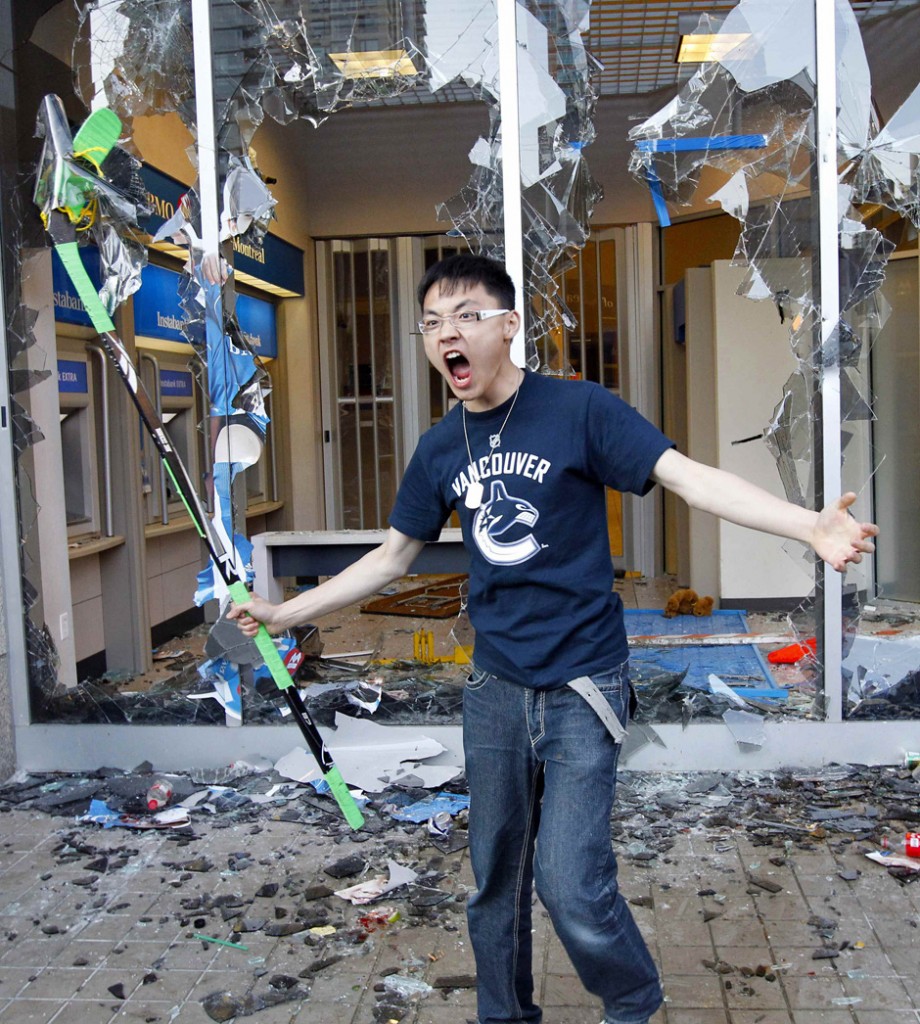Don’t hate—celebrate!
By Julia Siedlanowska, Staff Writer
Last week after the World Cup Brazil v. Mexico game, a friend of mine was celebrating at a local pub. He remarked that things were starting to get a bit rowdy between the fans of the opposing teams after the game was decided. Fortunately, the night ended only on threats, but the reminder for potential violence remained in my mind.
As someone who has virtually no interest in sports, it is difficult for me to sympathize with the ferocity that is somewhat condoned as part of the game. Mob mentality excuses most of the individuals involved in riots, and it amazes me still how acceptable it is to blame one’s actions on alcohol. Socially unacceptable behaviour becomes the norm and is passed off under the guise of fun and passion. I can comprehend the excitement fans feel regarding their respective teams; however, human energy can have positive outlets. Rob Flis states in his article “10 of the Most Costly Sports Riots in History” for the Richest, an online journal, that in combatant sports like martial arts “the incidences of violence are significantly lower.” I understand the fun in playing and the fun in cheering for a unified cause, but what I cannot accept is the damage and violence that can result from an abandonment of our common codes of ethics.
The rules of survival change and things escalate in a crowd, but is it so silly to assume that the root of all these terrible incidents is in the hands of the individuals? Sometimes, it’s not that simple. Here are a few astonishing accounts of some of the most devastating sports riots in recent history.
Egypt 2012
Only two years ago, more than 70 were killed while over 1,000 people were injured after an Egyptian Premiere League football game between the Al-Masry and Al Ahly teams broke out into a riot. The country was politically unstable to begin with, and some question whether the riot was more political than a simple sport rivalry. Knives, swords, clubs, bottles, and firecrackers were used in the attacks, and many questioned how spectators were able to enter the stadium with the weapons. The riot prompted an emergency parliamentary session, as calls to the government for greater security increased. After 21 of the convicted attackers were sentenced to death, an anti-verdict riot ensued. The anti-verdict riots left at least 30 more dead and more than 300 wounded. The Port Said Stadium riot was the deadliest soccer riot in over 15 years.
Vancouver 2011
With approximately 140 injuries and $5-million in property damages, the Vancouver Stanley Cup riot is recent history to many of us. With the Vancouver Canucks playing against the Boston Bruins for the Stanley Cup, the stakes were high for both teams. When Boston triumphed, Canucks fans watching the game on large outdoor monitors near Rogers Arena began throwing bottles at the screens. Over the next few hours the action escalated and several cars, including police vehicles, were set aflame. Vandalism and violence escalated and spread to other parts of the city, including Granville and Robson Street. The police made 101 arrests on the scene and investigations continued long after the incident, with police using social media to catch many of the criminals. Investigations are still ongoing.
Hillsborough 1989
The Liverpool vs. Nottingham game of the 1989 FA Cup semi-final ended in what is now called the Hillsborough Disaster. Fans were packed into overcrowded stands in the stadium resulting in a human crush that took the lives of 96 people. Some tried to escape by climbing or being lifted over the fences. Shortly after the game began, the barrier broke and stadium attendees began falling over each other. The incident is largely blamed on police for letting in too many spectators, and is a black mark on British football history. Of the 96 casualties, only 14 were admitted to hospital.
Although in the case of the Hillsborough Disaster, none of the deaths were caused by fan violence, there is still a sense of social responsibility around all the incidents—be it the response of the police or medical staff. Part of the draw for sports is a sense of unity and belonging to a team; in a riot, perhaps it’s better to retain a sense of individual sanity. It’s sad that in Vancouver, where we had neither political instability, nor inescapable overcrowding, fans chose to sink to random destruction. Although many Vancouverites took to the streets to help clean up the next day, the memory of the riot serves as an ugly reminder of what happens when we sacrifice our values to a mob mentality. When dealing with large numbers, 96 casualties is a difficult number to wrap your head around. What’s easier to comprehend is the value of even one human’s health and happiness, and your individual impact on it.
